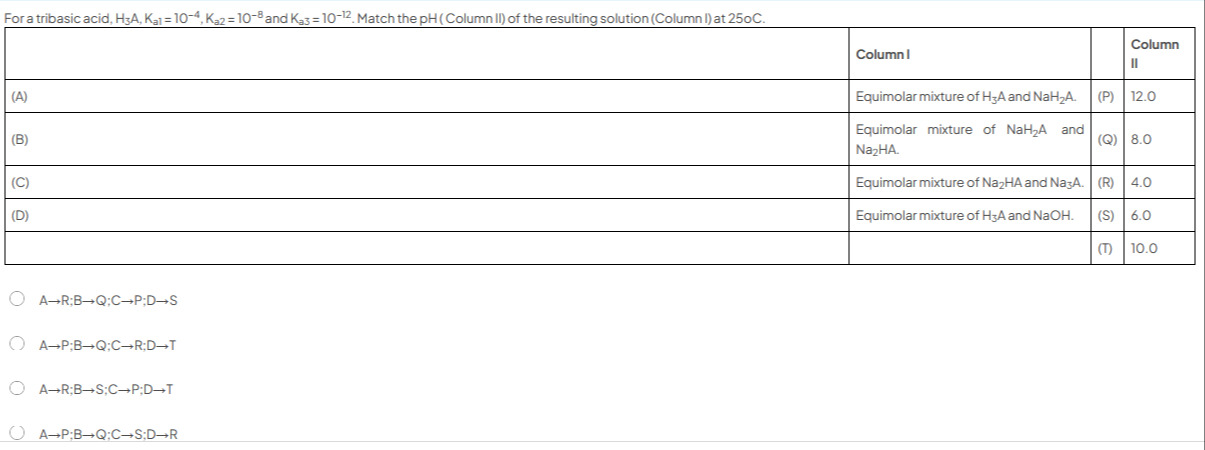Question
Question: For a tribasic acid, $H_3A$, $K_{a1}=10^{-4}$, $K_{a2}=10^{-8}$ and $K_{a3}=10^{-12}$. Match the pH ...
For a tribasic acid, H3A, Ka1=10−4, Ka2=10−8 and Ka3=10−12. Match the pH (Column II) of the resulting solution (Column I) at 250C.

Equimolar mixture of H3A and NaH2A.
Equimolar mixture of NaH2A and Na2HA.
Equimolar mixture of Na2HA and Na3A.
Equimolar mixture of H3A and NaOH.
12.0
8.0
4.0
6.0
10.0
A → R; B → Q; C → P; D → S
Solution
The problem requires matching the pH of solutions formed from a tribasic acid H3A and its salts, given Ka1=10−4, Ka2=10−8, and Ka3=10−12. This implies pKa1=4.0, pKa2=8.0, and pKa3=12.0.
-
(A) Equimolar mixture of H3A and NaH2A: This is a buffer solution of H3A/H2A−. Using the Henderson-Hasselbalch equation, pH=pKa1+log[H3A][H2A−]. Since the concentrations are equimolar, pH=pKa1=4.0. Thus, A → R.
-
(B) Equimolar mixture of NaH2A and Na2HA: This is a buffer solution of H2A−/HA2−. The Henderson-Hasselbalch equation gives pH=pKa2+log[H2A−][HA2−]. With equimolar concentrations, pH=pKa2=8.0. Thus, B → Q.
-
(C) Equimolar mixture of Na2HA and Na3A: This is a buffer solution of HA2−/A3−. The Henderson-Hasselbalch equation gives pH=pKa3+log[HA2−][A3−]. With equimolar concentrations, pH=pKa3=12.0. Thus, C → P.
-
(D) Equimolar mixture of H3A and NaOH: The reaction H3A+NaOH→NaH2A+H2O goes to completion, forming NaH2A. The H2A− species is amphoteric. The pH is approximately the average of pKa1 and pKa2: pH≈2pKa1+pKa2=24.0+8.0=6.0. Thus, D → S.
Therefore, the correct matching is A → R; B → Q; C → P; D → S.
